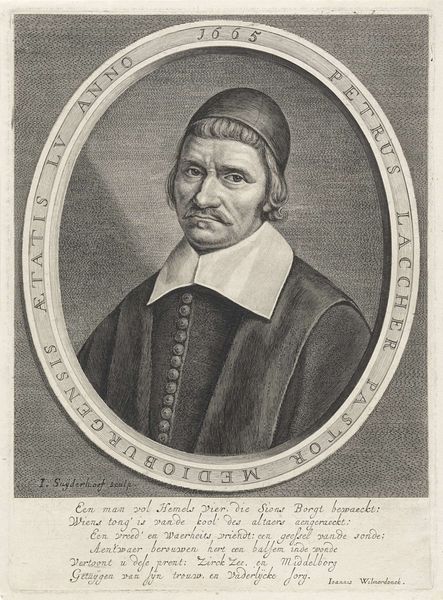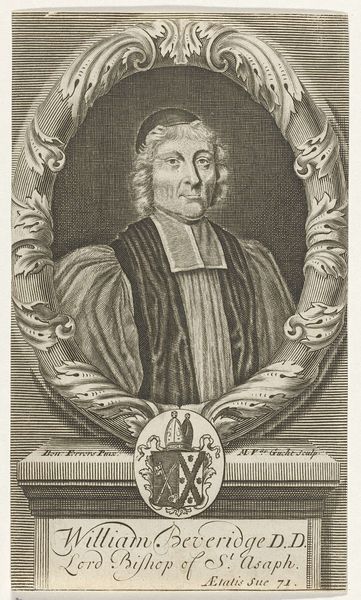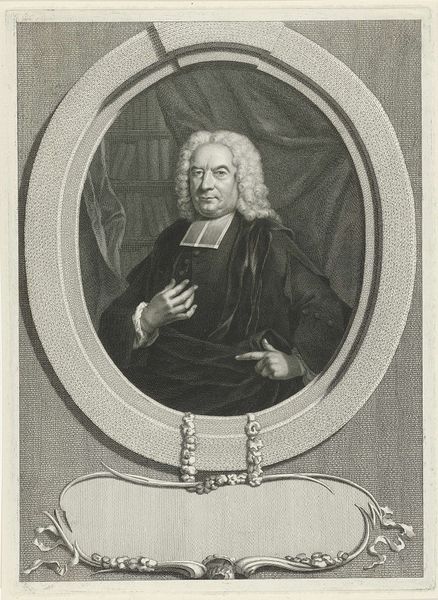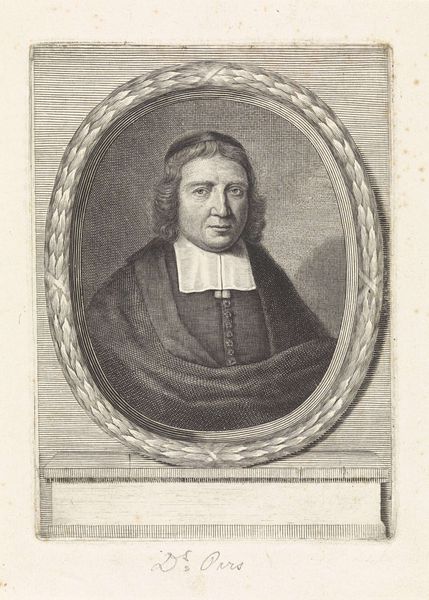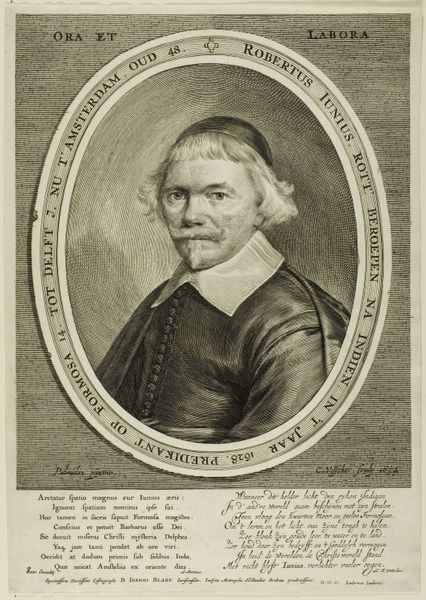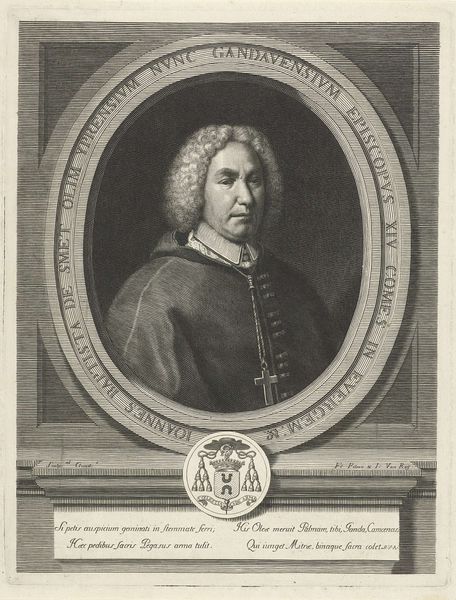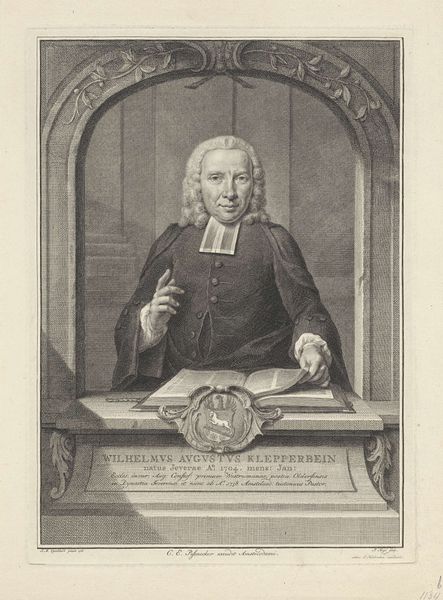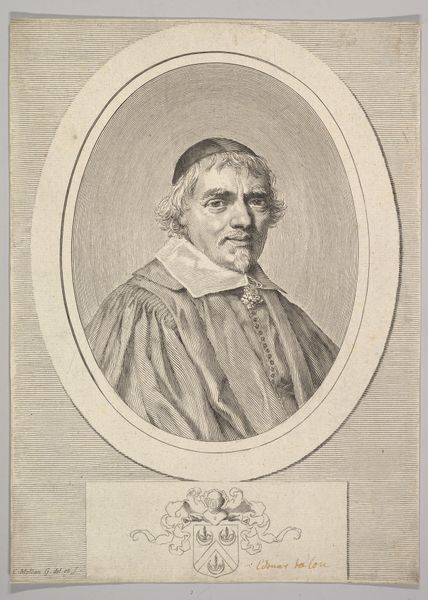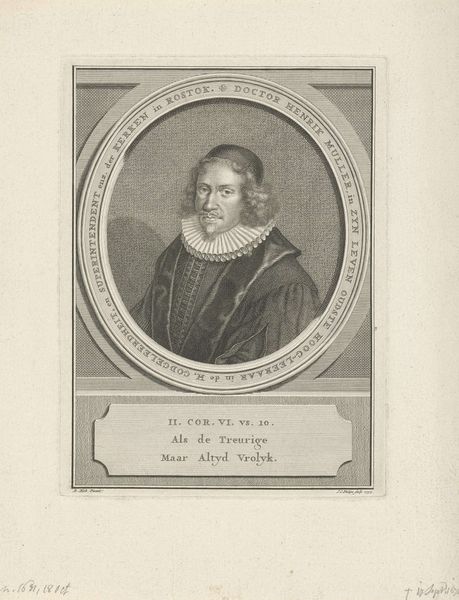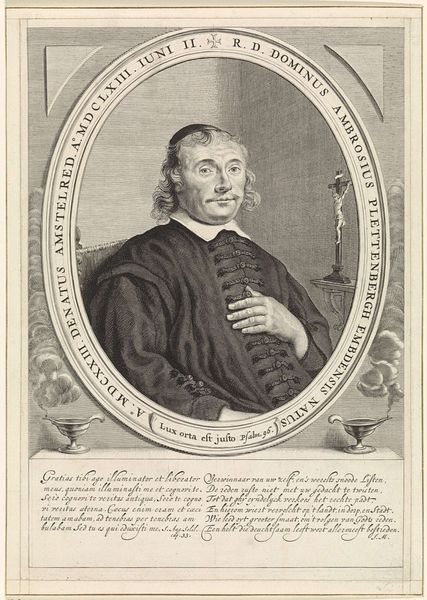
engraving
#
portrait
#
baroque
#
old engraving style
#
figuration
#
portrait reference
#
engraving
Dimensions: height 248 mm, width 168 mm
Copyright: Rijks Museum: Open Domain
Curator: The crosshatching in this engraving is just divine, don’t you think? I can almost feel the velvet of his coat. Editor: Agreed, the texture is remarkable. What we’re looking at is Crispijn van den Queborn’s 1645 engraving, "Portret van Robert Junius," housed right here at the Rijksmuseum. It’s a Baroque piece. Beyond the technical skill, though, I find myself thinking about Junius himself and his role in a colonial project. Curator: Ooh, tell me more! My mind was happily wandering through those beautiful light and shadow contrasts. Editor: Well, Junius was a Dutch missionary in Formosa—now Taiwan—in the 17th century. This portrait, while undeniably well-executed, represents a figure complicit in the Dutch East India Company's colonial activities. Curator: Ah, the old "civilizing mission" narrative rearing its head, or, rather, elegantly depicted in ink. Do you think van den Queborn was making a statement, or was he simply portraying a prominent figure of the time? Editor: It’s hard to say definitively without more context surrounding the commission itself. Artists were often reliant on patronage, of course, but still, as critical observers, we are permitted to reflect on Junius’ presence within a system that systematically dismantled indigenous cultures and appropriated land and resources. His slightly stern expression... does it hint at the burdens of his self-appointed task, or is it pure stoicism? Curator: Hmmm, burdened or self-satisfied… it’s always difficult to truly see into someone’s soul across centuries, isn't it? The detail in that collar, though! It's immaculate. I do wonder what Junius thought of his own likeness being captured like this. Did he see it as a testament to his good work, or a reminder of the sacrifices he made? And let's not forget van den Queborn who was clearly such a talented individual. Editor: And what is so interesting in a collection like the Rijksmuseum is precisely the space that allows the lingering dissonance of historical complexity in which one can examine technical brilliance and consider a figure's involvement in colonial endeavors and how they intersect and inform one another. Curator: Absolutely. It gives one a lot to ponder!
Comments
No comments
Be the first to comment and join the conversation on the ultimate creative platform.
